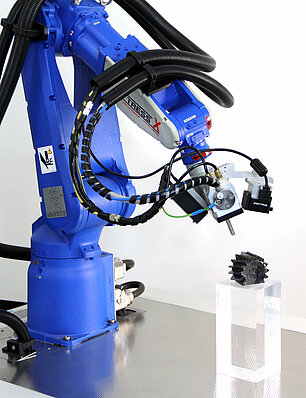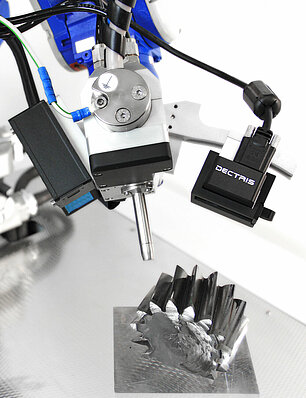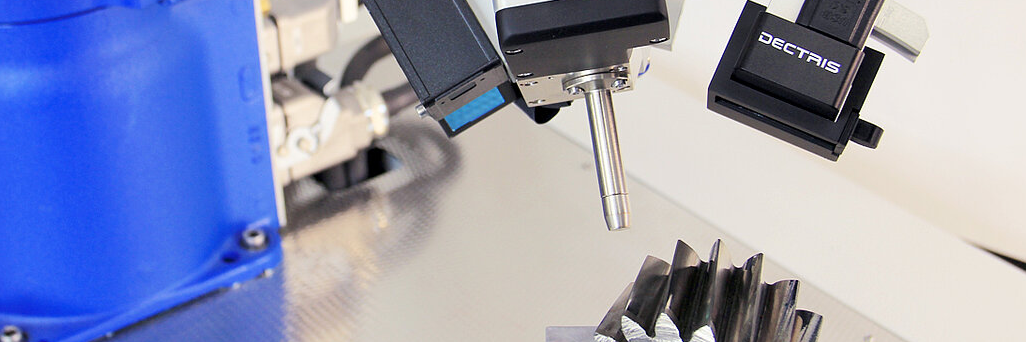- Home
- Services
- Testing & Qualification
- Product Qualification
- Material Testing and Failure Analysis
- Residual Stress Measurement
- Home
- Services
- Testing & Qualification
- Product Qualification
- Material Testing and Failure Analysis
- Residual Stress Measurement
Radiographic Determination of Residual Material Stresses (XRD)
Residual stresses are mechanical stresses that are present in materials and components but cannot be attributed to an external load. They are caused by plastic deformation and are generally present to varying degrees in every component. Component residual stresses occur in almost all manufacturing and processing procedures and can have a significant influence on the strength and service life of components. If residual stresses and operating stresses overlap unfavorably, material failure can occur without the external load reaching the strength limit! Conversely, the operational strength of components can be improved by the targeted introduction of residual stresses. Quantitative information about the size and orientation of residual stresses are therefore important quality characteristics and can be damage-relevant influencing factors. X-ray diffraction (XRD) is a proven method for determining the residual stresses in crystalline materials.
Non-destructive residual stress analysis on metal parts using X-ray diffraction (XRD)
Short-wave X-rays are diffracted by the crystallites of the component material (Bragg reflection). The 2-theta method can be used to derive information about the atomic distances in the crystal lattice (so-called lattice plane distances). In an elastically stressed material, changes in the lattice plane spacing occur compared to the stress-free state. This is used in X-ray residual stress analysis with the sin2ψ method. X-ray diffraction is performed on the sample at different tilt angles and thus enables precise detection of length changes in the atomic distances in the tilt direction. Using elasticity constants, these changes in length can be converted into compressive or tensile stress values (specified in MPa). The residual stress can thus be analyzed in a specific component direction. The stress tensor is calculated by tilting in three different component directions.
The information depth of the X-rays is relatively low and is only a few µm. The residual stress is therefore determined at the component surface. By repeated, localized material removal using electrolytic etching, it is possible to derive a depth profile of the residual stress without significantly changing the residual stresses in the component. This can be done with very high spatial resolution.
Apparatus setup: Diffractometer
Our compact diffractometer is mounted on a 6-axis robot. This setup makes it possible to examine components of different shapes and sizes. We carry out precise residual stress measurements on a wide variety of metals and alloys (e.g. steel, Ni, Cu, Ti, Al, etc.). Different X-ray tubes are used for specific materials in order to achieve optimum measurement results.
Artifact-free removal of the component surface by electrolytic etching enables measurements of the residual stresses present at different component depths. This allows stress curves to be displayed in a depth profile.



Determination of retained austenite content
We carry out determinations of retained austenite content using X-ray diffraction on steels. Austenite (γ-iron) has a characteristic diffraction pattern that distinguishes it from ferrite (α-iron). Based on a diffractogram, the contents of these two components can be reliably quantified down to very low concentrations (<1%). For the measurement, we use a diffractometer optimized for the application, which is equipped with a 65 kV molybdenum X-ray tube. The measurements comply with the ASTM E975 standard.
Application examples
- Material fatigue:
Residual stresses in the form of compressive or tensile stresses can be beneficial or detrimental to material strength. - Additive manufacturing:
Process-induced residual stresses (e.g. from selective laser or electron beam melting) play a decisive role in the service life of an additively manufactured functional component. - Residual surface stresses have a direct effect on the service life of hardened parts.
- Residual welding stresses are caused by different thermal expansion and contraction of the weld metal and the base material and can act in addition to external loads and cause structural failure.
- Residual surface stresses induced by component production or cold forming (e.g. shot peening) change the mechanical properties of metals. There is an interest in specifically setting the desired residual stresses, e.g. in the form of compressive residual stresses to improve fatigue strength.
Standards
The residual stress measurements comply with the ASTM E915, ASTM E2860 and EN 15305 standards. We also carry out measurements and evaluations in accordance with OEM specifications, e.g. VW (PV 1005)
How can we help you?
Please fill in the form and we will get in touch with you as soon as possible.
